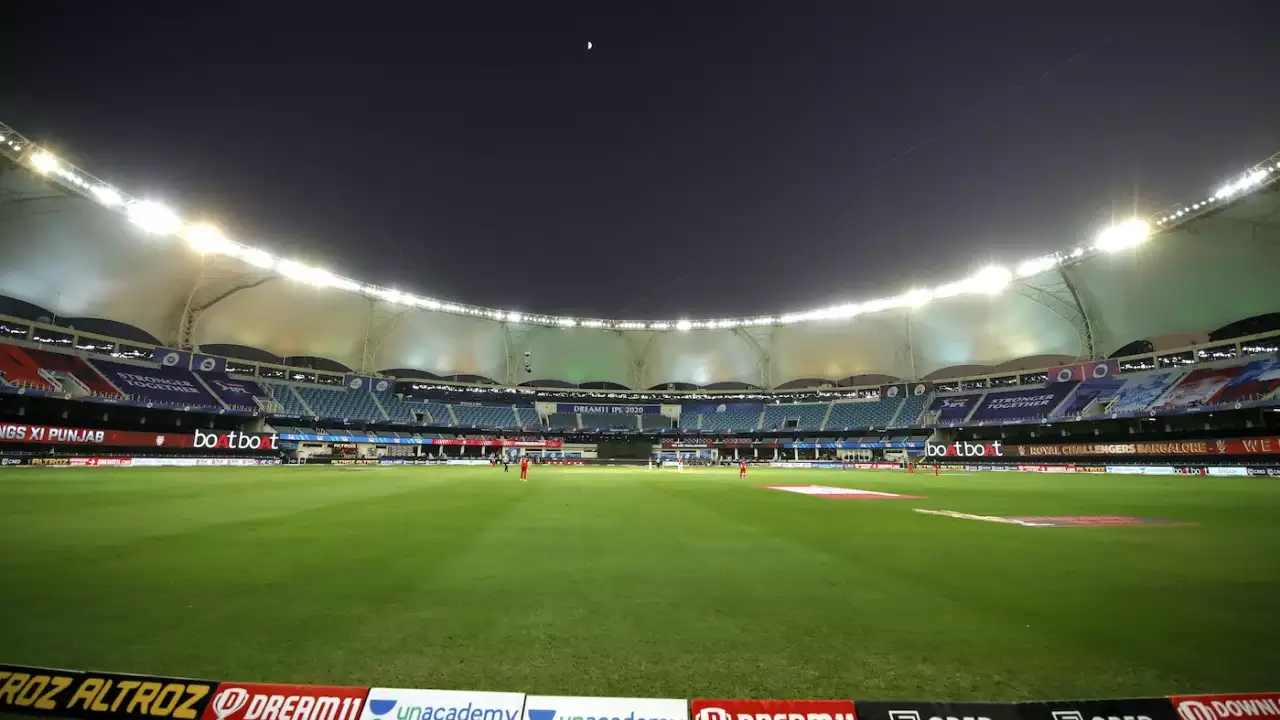
The Dubai Stadium is nicknamed 'Ring of Fire' | Courtesy - BCCI
KEY HIGHLIGHTS
- The Dubai Stadium has a history of dropped catches
- The venue is labelled 'Ring of Fire'
- Dubai International Stadium has a unique floodlight structure
The first match of the 2025 Champions Trophy at the Dubai International Stadium saw India defeat Bangladesh in a low-scoring clash with Shubman Gill playing a gritty match-winning knock of.
The match saw a series of dropped catches with Rohit Sharma and Hardik Pandya dropping Jaker and Towhid Hriody in the first innings. Later, KL Rahul got a second chance during India's run chase at a crucial juncture in the match as Jaker Ali dropped his catch from Taskin Ahmed's bowling at deep square leg.
Although dropped catches are part of the game, they are a common theme at the iconic venue in Dubai across formats.
The 'Ring Of Fire'
For those unversed, the Dubai International Stadium is nicknamed the 'Ring of Fire.' The reason behind the title are the unique floodlights at the venue. Unlike most venues, where they are towers installed, 350 lights in Dubai are fixed around the circumference of the roof.
The Dropped Catch Phenomena
Over the years, dropped catches have become a common phenoma at the venue and were visible in the Women's T20 World Cup held in October last year. Most matches of the tournament were held in Dubai and there were 88 catches dropped in 20 matches in the group stage. In one match, Pakistan dropped eight catches against New Zealand. According to BBC, There was a 65.7% catch efficiency in matches in Dubai during the mega event.
In the Indian Premier League, among the 10 venues to host more than 10 matches, the catching efficiency (77.5) in Dubai is the lowest with 93 drops in 322 catches as per the same report.
The unique floodlight structure is blamed for the dropped catches as the lights appear lower in a fielder's eyeline which makes the ball harder to track at speed especially in white-ball cricket due to the same colour as the lights.
"Only for the high catches because there they have a circular ring of light. So it's very difficult to pick the ball. If you have four, five or six floodlights, there are spaces where you are not hindered by the light but in Dubai at every angle, at any point of time, the ball is going to disappear in that space. So your judgment should be spot on," ex-India women's cricket team fielding coach Biju George explained to ESPN Cricinfo about the struggles in Dubai for fielders.
For India, there is no escape from the issue and they will have to adjust to the ground as all their matches in the tournament including a potential semi-final and final are in Dubai. With India yet to field under the lights, it will be a worrying sign for the team management.
Get Latest News Live on Times Now along with Breaking News and Top Headlines from Cricket, Sports and around the world.
